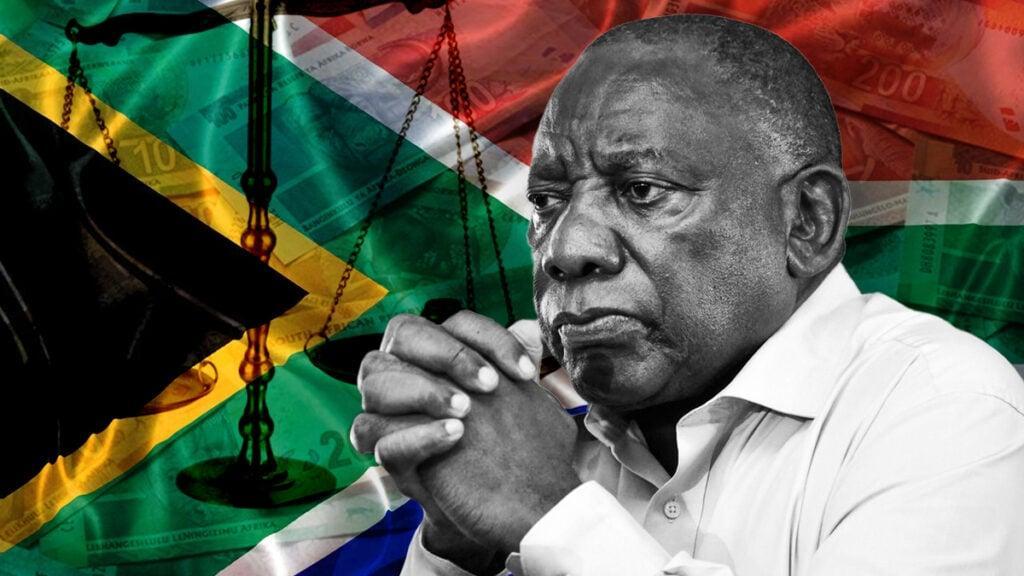Africa-Press – South-Africa. South Africa is attempting a tricky balancing act of ensuring it retains close ties with economies in Asia and the Middle East, without further eroding its relations with the United States.
The country is increasingly being pushed to effectively choose between East and West in this regard, with its attempts at neutrality not being received well by either side.
Since the beginning of 2025, much focus has been placed on South Africa’s relations with the United States. However, its economic ties to the East, particularly China, are relatively more important.
China is the source of demand for the vast majority of South Africa’s commodities and is an increasingly important source of foreign investment.
The world’s second-largest economy sits at the centre of the so-called ‘Arc of Opportunity’ from Cape Town through the Middle East to China.
Standard Bank’s chief economist, Goolam Ballim, explained that this represents this century’s source of economic growth and will drive increases in demand for local commodities.
“We have recently advanced this idea of the Arc of Opportunity, meaning the geographic arc from the Cape to the Middle East to the Far East. This represents this century’s growth,” Ballim said.
“Most of the ‘catch-up’ economies lie in these zones, which are expected to grow at an average annual rate exceeding 4% over the coming decades.”
“The mushrooming of the middle and high-income classes in these economies will be a vital source of demand for local commodities and services.”
This makes it particularly important for South Africa to retain good economic relations with the so-called East and, in particular, China.
“Geographically, we are being compelled to choose between West and East. I think we must be pragmatic and pursue an open-minded perspective on relations with all partners,” Ballim said.
“Our lot with the Middle East and the Far East must not be severed in terms of trade, opportunity, and soliciting investment.”
Crucially, these partners are going beyond merely being sources of demand for local commodities, but are increasingly becoming important investors in South Africa.
China has increased its lending to the continent, and its companies are greatly increasing their presence throughout South Africa and the broader region.
The Middle East, through the immense wealth generated from its export of oil, has become a much more important investment partner in recent years.
“The Middle East is becoming a substantive partner for South Africa in the form of trading opportunities and a provider of liquidity, in terms of operational liquidity and investment funding.”
The balancing act
US President Donald Trump
Although the Middle East and the Far East are becoming increasingly important sources of investment in South Africa, the country cannot afford to let its relations with the United States deteriorate further.
The United States remains home to around two-thirds of all investable capital in the world, making it a crucial investment partner for South Africa.
With the government being unable to fund its ambitious infrastructure build out plans in the electricity, logistics, and water sectors, it has to turn to alternative sources of financing.
An obvious partner is the United States, which has the capital needed to finance record investment in South Africa’s electricity grid and logistics network.
We have to consider that exports going to the United States from South Africa are going to experience some level of tariffs eventually, and that does present a threat to volumes,” Bllaim said.
Standard Bank’s economics unit has calculated that for every 10 percentage point increase in the tariff rate, South Africa will lose 0.1% of GDP growth.
This may not appear significant, but considering the bank only expects South Africa to grow at 1.1% in 2025, a 30% tariff rate could shave off a considerable amount of GDP growth.
However, this is not the main threat to the country’s economy, with indirect impacts likely to have a far greater effect on growth and inflation, Ballim said.
“We do see the transmission to South Africa as coming from more of an indirect channel, from the decline in global growth due to tariffs and greater uncertainty.”
Another factor regarding relations with the United States is the impact on sentiment towards a country, with a deterioration in relations with it likely to lead other countries to be hesitant in investing in South Africa.
Aside from balancing West and East, Ballim said that South Africa must also realise that Africa is not developed enough as a market to be a source of demand for major exports.
“There is a clear recognition in recent times that Africans do not produce what Africans consume, with many countries having similar export profiles,” Ballim said.
This leads to the need to shift towards alternative export industries that align with where investment is expected to flow to on the continent.
Ballim expects most investment to be directed towards developing basic infrastructure, such as national electricity grids and logistics networks.
To benefit from this would require a pivot away from light industry towards traditional heavy industry to supply steel, cement, and other materials needed.
For More News And Analysis About South-Africa Follow Africa-Press






